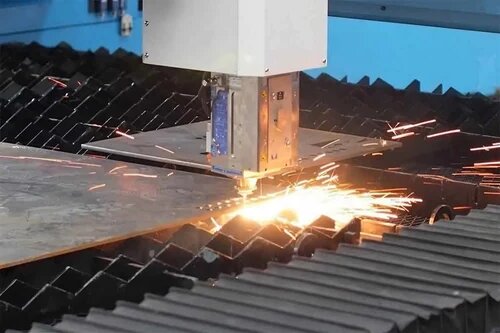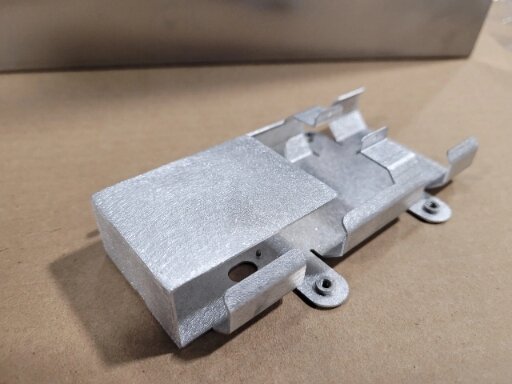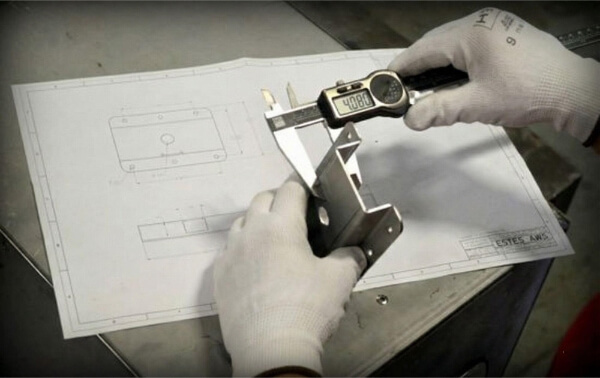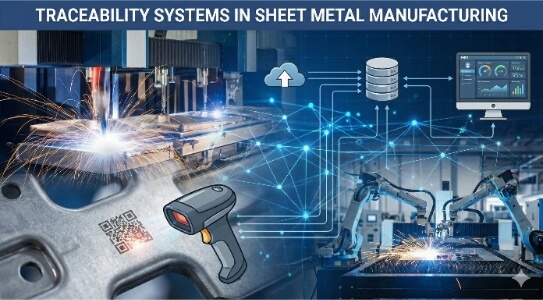Time often gives the most potent edge in product development. Startups and designers need prototypes fast to test ideas, gain investor interest, and bring products to market before others. Getting sheet metal parts made quickly and accurately can decide whether a project stays on schedule or falls behind.
Fast sheet metal prototyping enables teams to test designs, confirm performance, and transition to production without lengthy waiting times. But finding a supplier that offers both speed and precision is not always simple. This article examines what constitutes reliable quick-turn prototyping in Australia and provides guidance on selecting the right partner for your next project.

What is Fast Turnaround Sheet Metal Prototyping?
“Fast turnaround” refers to the speed at which a manufacturer can deliver a finished prototype after receiving the design file. In sheet metal fabrication, this speed depends on several factors — such as design complexity, part size, and material type. Simple laser-cut parts made from stocked materials can often be finished within two to three days.
More complex parts that need bending, welding, or surface finishing may take about a week or longer. If custom materials or precise machining are required, lead times can be extended due to additional setup and sourcing requirements. Fast turnaround does not mean cutting corners. It shows how well a supplier manages quoting, production scheduling, and material flow.
Fabrication shops that utilise digital quoting tools and automated machines can save time by eliminating manual steps and preventing production delays. This efficiency shortens delivery times while maintaining prototype quality and stability, even when deadlines are tight.
Key Factors That Influence Lead Time
Several factors influence the speed at which a prototype can be completed. Production efficiency, material readiness, and internal workflow all play significant roles in shaping the overall turnaround time.
Production Efficiency and Automation
Automation is the heart of fast prototyping. CNC laser cutting machines handle multiple sheets with precise steadiness, while automated bending systems expedite forming by eliminating manual setup and ensuring accurate angles for each bend.
Digital scheduling tools also improve coordination. They monitor job progress in real time and help managers assign machines efficiently. This reduces downtime between steps, ensuring production continues to move smoothly. The combination of CNC precision and automated workflow enables manufacturers to deliver consistent quality while maintaining short cycle times.
Material Availability and Inventory Management
Material readiness is often what decides how soon production can start. Fabrication shops that keep common materials, such as stainless steel, aluminium, and mild steel, in stock can begin cutting as soon as the CAD files arrive. Using standard sheet sizes and thicknesses also eliminates the need for extra sourcing steps.
Effective inventory management systems track material levels and automatically reorder when needed. This prevents delays from shortages or supplier lead times. With reliable access to raw materials, production stays steady and turnaround times remain predictable.
In-House Capabilities vs. Outsourcing
Manufacturers that handle cutting, forming, welding, and finishing in-house have a clear speed advantage. When everything happens under one roof, communication is faster, and parts move quickly from one process to the next. Quality control is also easier to manage.
Outsourcing, on the other hand, can slow down the process. Each subcontractor follows different schedules, standards, and logistics processes. Waiting for outside work adds uncertainty and extra days to delivery. Choosing a partner with complete in-house capabilities ensures smoother coordination, consistent quality, and shorter lead times.

Evaluating Australian Prototype Manufacturers
Choosing the proper prototype manufacturer in Australia is about more than cost. The best partners offer local expertise, modern equipment, and clear, responsive communication.
Local Expertise and Technology Investment
A local supplier with advanced technology can make a big difference in both speed and precision. Australian manufacturers that utilise CNC laser cutters, automated bending systems, and precision welding machines can complete prototypes more quickly while maintaining high accuracy.
Their understanding of local standards and project needs ensures that parts work as intended from the start. Working with an Australian shop also makes collaboration easier. Engineers can visit in person, inspect prototypes, and discuss changes directly. This hands-on communication helps refine designs more quickly and reduces errors before mass production begins.
Quality Systems and Communication
Strong quality control is key to reliable, fast-turnaround work. ISO-certified manufacturers adhere to established procedures for inspection, calibration, and record-keeping. This structure ensures every project stays consistent from quote to delivery.
Digital order tracking brings transparency to the process. Customers can view job progress, receive updates, and be notified when parts are ready. Open communication between engineers and fabricators prevents confusion and unnecessary rework. When both sides share information clearly, the whole project moves faster and stays on track.
Logistics and Delivery Options
Delivery speed also shapes total turnaround time. A manufacturer located near your business or within the same region can reduce transportation time, often delivering finished prototypes within one or two days.
For clients farther away, express shipping helps maintain short timelines. Many Australian manufacturers work with trusted couriers that provide same-day or overnight delivery. Planning, packaging, and shipping in advance prevents delays once fabrication is complete. Together, these logistics steps help ensure your prototypes arrive quickly and reliably.
Balancing Speed and Precision
Real efficiency doesn’t come from rushing work. It comes from doing precise work quickly. Professional fabricators know how to deliver fast production without losing accuracy or finish quality.
Avoiding Trade-Offs
Some people believe that faster production means lower quality, but that’s not always the case. Skilled operators utilise calibrated machines and conduct step-by-step inspections to ensure every part remains within tolerance. Automated laser cutting and bending systems offer consistent accuracy while maintaining high output.
Surface finish is just as crucial as dimension accuracy. Shops that use controlled polishing, powder coating, or anodising systems can produce smooth and even results, even when working to tight deadlines. Continuous monitoring and precise process control help catch issues early. With these systems in place, speed and precision work together, not against each other.
The Role of Design for Manufacturability (DFM)
DFM is one of the most innovative methods for reducing lead time and improving quality. In a DFM review, engineers examine the design for unnecessary complexity, tight bends, or complex features that slow down production. Simplifying these elements helps parts move through fabrication faster and with fewer errors.
When a design aligns with the shop’s equipment and materials, setup time decreases and rework becomes less frequent. DFM also helps identify better material or geometry choices that meet the same performance goals with less effort. Open discussions between designers and fabricators ensure that prototypes are both accurate and efficient to produce.

How Startups and Designers Can Optimise Their Projects?
Early design decisions have a significant impact on delivery speed and final quality. By simplifying designs and sharing precise details, startups and designers can accelerate prototyping and minimise back-and-forth communication.
Simplify Early Designs
Simple designs move through production much faster. Avoid using too many materials or complex part variations in the first version. Stick to standard sheet thicknesses, hardware, and bend angles that match standard tooling. This helps fabricators start cutting and forming right away without waiting for special setups or custom materials.
Reducing complexity also minimises errors. Every added feature or tight tolerance increases programming, setup, and inspection time. Focus on testing the main functions first. Once the prototype works as intended, you can add refinements in later versions.
Share Clear Drawings and Requirements
Clear communication starts with complete design data. Always include 3D CAD files, flat patterns, and detailed 2D drawings with dimensions and tolerances. When key details are missing, production halts while engineers await clarification.
Add surface finish notes, colour choices, and hardware details so the fabrication team can plan the proper process from the start. With complete and organised drawings, quoting becomes faster, material prep starts sooner, and fabrication begins without delay. Clear information turns collaboration into real progress and keeps your project moving on schedule.
Fast Prototype Delivery with Shengen
Shengen supports Australian customers with rapid sheet metal prototyping that combines speed, accuracy, and reliability. Our streamlined production system enables us to move from a CAD file to a finished part within just a few days. With automated laser cutting, CNC bending, and digital workflow management, we eliminate bottlenecks and ensure every project stays on track.
We maintain a wide range of materials in stock, including stainless steel, aluminium, and mild steel, allowing production to commence immediately. Every order is reviewed by skilled engineers who check manufacturability, confirm tolerances, and ensure each part meets strict quality standards before shipping.
Working with trusted logistics partners, we provide fast and dependable delivery across Australia. Whether you need a single prototype or a small batch of working parts, our team ensures a smooth process from quote to delivery. Shengen helps startups and designers turn ideas into genuine parts quickly, refine their designs faster, and reach the market ahead of schedule.
Want to turn your design into reality without long delays? Our team delivers fast, high-quality sheet metal prototypes built to your exact requirements. Request your prototype quote today — receive precision parts in just days, not weeks.
Hey, I'm Kevin Lee

For the past 10 years, I’ve been immersed in various forms of sheet metal fabrication, sharing cool insights here from my experiences across diverse workshops.
Get in touch

Kevin Lee
I have over ten years of professional experience in sheet metal fabrication, specializing in laser cutting, bending, welding, and surface treatment techniques. As the Technical Director at Shengen, I am committed to solving complex manufacturing challenges and driving innovation and quality in each project.




